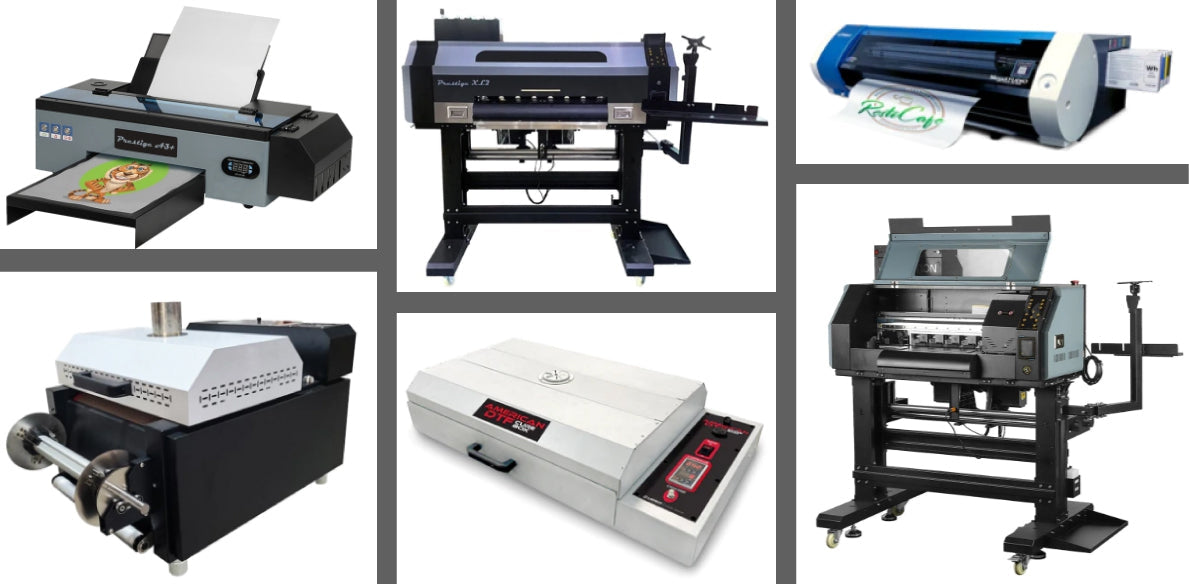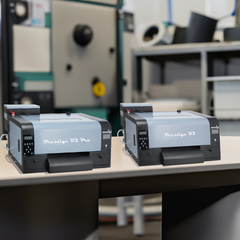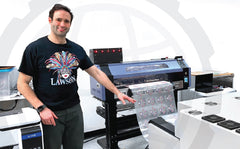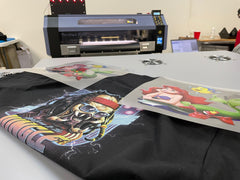Direct to Film (DTF) printing has taken the world of custom apparel and textile decoration by storm. With its ability to produce vibrant, detailed designs on a wide range of fabrics, DTF has become a game-changer for businesses and individuals alike. In this blog post, we will dive into the fascinating world of DTF technology, focusing on some of its essential components and tools, such as shakers, ovens, printers, and more.
Understanding DTF Printing
Before we delve into the various tools and equipment associated with DTF printing, let's review the core technology. DTF printing is a digital printing method that allows you to transfer high-quality, full-color images directly onto textiles like t-shirts, hoodies, and even canvas bags. Unlike traditional screen printing or heat transfer methods, DTF printing doesn't require screens or intricate color separation processes.
At its core, DTF printing relies on a unique combination of specialized pigment based ink, specially coated film and a DTF printer. Just like heat transfer vinyl (htv) or traditional screen printed transfers, DTF transfers require a heat press for application. The printer prints directly onto the DTF film. A powdered adhesive goes on top of the ink and is heated to the point of melting. Then, the transfer is placed on the garment and a heat press fuses the ink into the textile, resulting in a durable and vibrant print.
Now, let's explore some of the essential tools and equipment used in DTF printing.
DTF Printers
DTF printers are at the heart of the DTF process. These printers are specially designed to handle textile printing and use a combination of vibrant, pigment based inks to create stunning designs. DTF printers come in various sizes, from desktop models suitable for small-scale operations to industrial-sized machines for high-volume production. Epson is one the most popular brands of DTF Printers.
DTF Inks
DTF inks are formulated to provide excellent adhesion to textiles while maintaining color vibrancy and durability. Using Epson printheads and the full CMYK, plus White color gamut, DTF inks can produce full-color, photorealistic designs.
DTF Powder Shakers & Ovens
When it comes to applying DTF powder to the printed transfers, there are two ways to achieve it. The first is manually or with an automatic shaker. An automatic shaker is the best for consistent and even DTF powder application.
After application, the DTF powder needs to be heated so it melts and is no longer grainy. An automatic shaker can achieve this. If powdering by hand, use either a heat press or a cure box, like the American DTF Cure Box.
Conclusion
DTF printing continues revolutionizing the world of custom apparel and textile decoration. As technology continues to advance, expect further innovations in the DTF industry, leading to even more remarkable printing capabilities and creative possibilities. So, if you're looking to express your creativity or start a new venture in the world of custom textiles, you need to explore DTF printing.




